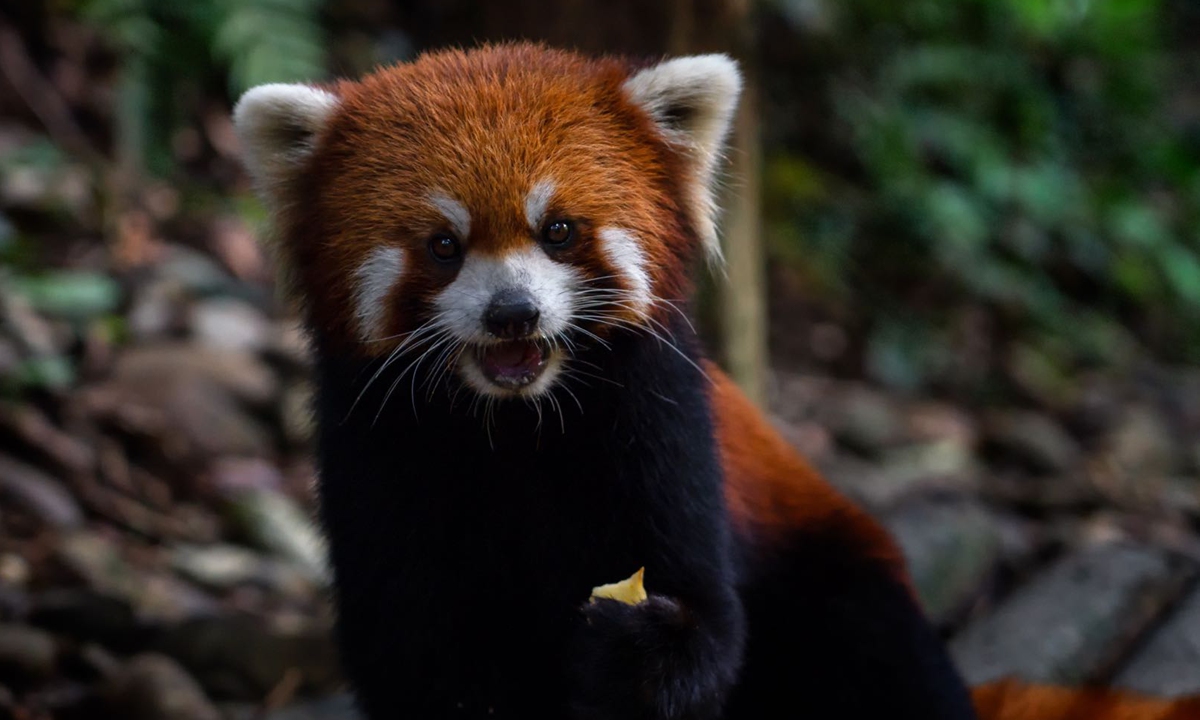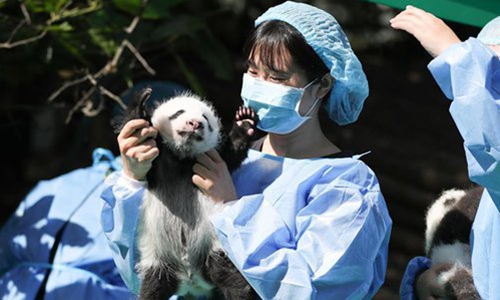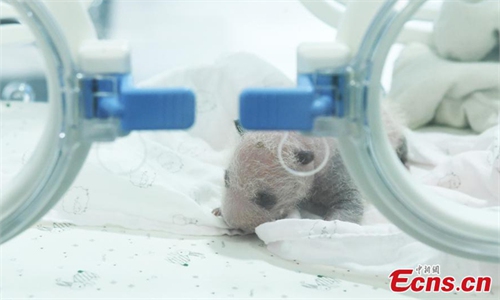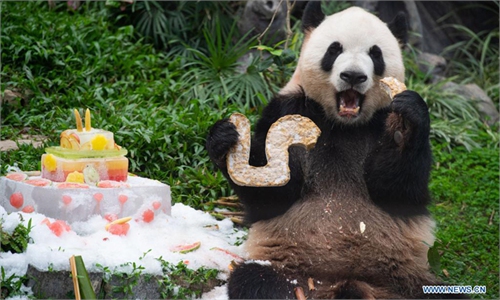
Red panda Photo: VCG
A red panda gave birth to rare quadruplets at the Chengdu Research Base of Giant Panda Breeding in Southwest China’s Sichuan Province on June 19, the second time this has happened in the base’s history. The mother and four babies are said to be in good health.
The four red panda cubs weigh around 0.1 kilograms, which is within the normal newborn range, and can now breastfeed by themselves, an employee at the base told the Global Times on Tuesday.
The red panda has been listed as Endangered on the International Union for Conservation of Nature (IUCN) Red List as the wild population is estimated at fewer than 10,000 mature individuals.
This is the second time that a red panda at the base gave birth to quadruplets. The first time was in 1996, but due to limited technology and conditions at the time, the mother and four cubs all died after three days.
This time, the use of more advanced breeding techniques ensured that the mother and cubs all survived, to the excitement of the keepers and experts. The success indicates that the base has made great progress in scientific research, protection and breeding of red pandas.
Eighteen red panda cubs were born at the base in 2021 and the total number of the species at the base has reached 163, making it the world's largest captive population of red pandas.




